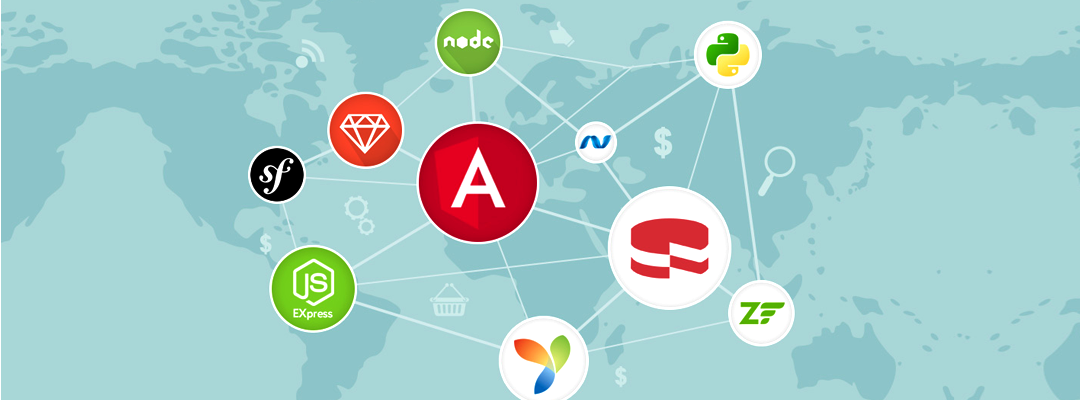With so many critical elements to consider, scalable web app development with high-performance metrics is difficult. Although the success of your app may seem like a dream come true, it may not have the resources to continue to provide a top-notch user experience as it gains in popularity.
The good news is that you can avoid common pitfalls that result in a subpar user experience and wasted resources by adhering to the best practices we’ll cover in this article. Read on to learn how to ensure your web app runs smoothly. It’s time to end your web applications’ subpar performance and create new ones that repeatedly draw users back.
There are various factors to consider with custom web application development for scalable web apps. Let’s dive deeper into some of the best practices to improve web app scalability & common issues to focus on.
How to Fix Scalability Issues
With custom web application development, scalability problems can have many different root causes, but the most frequent ones are application code, constrained database capabilities, and hardware resources.
– Application Code
Imagine you have a website or app where users can upload pictures. A large image might cause the application, which is only running on one thread, to crash. These slow request pipeline components constrain an application’s response time and scalability. It may create a need for extensive web application maintenance.
Moving sluggish components into asynchronous background jobs is the best fix for this issue. For instance, requests for image uploads could be included in requests and sent to a queue. As soon as the job is scheduled (in milliseconds), the user’s request is satisfied, and a background worker takes care of the actual uploading task after that.
– Database Constraints
Consider a financial program that creates a stock chart with various technical indicators. Each indicator requires a complicated calculation to be made on the spot with time series data. The time required to perform the complicated calculations could reduce the application’s scalability and slow response times.
Caching pre-calculated values and running calculations in a separate background job are the best solutions for these kinds of issues. For instance, you could compute the historical time-series data for a technical indicator up to the present period and cache those values. Due to this, it is no longer necessary to compute the entire time series for each request & this will enable a more responsive web app.
– Hardware Resources
Consider a financial program that creates a stock chart with various technical indicators. Each indicator requires a complicated calculation to be made on the spot with time series data. The length of time required to perform the complicated calculations could reduce the application’s scalability and slow response times.
Caching pre-calculated values and running calculations in a separate background job are the best solutions for these kinds of issues. For instance, you could compute the historical time-series data for a technical indicator up to the present period and cache those values. Because of this, it is no longer necessary to compute the entire time series for each request.
The Best Web App Development Formula for Scalability

Now that you’re aware of the commonly found scalability issues with web application development, let’s dive deeper into some of the best practices to scale your web apps to new heights.
– Use the Appropriate Tech Stack
Whether your business uses XAMPP, WAMP/LAMP stacks, or another web server platform, you should use a technology stack that your business can afford. If you want to guarantee compatibility, use a hardware-based load balancer. Ensure that the app functions effectively for your users as well. Numerous plug-ins are available if you choose to use a database other than MySQL.
– Analyze Requirements
Learn how your web application would work and look. Make sure the prerequisites are met for whichever type of app you create, whether it’s a progressive web application, static, dynamic, or any other kind. Once you clearly understand the requirements and overall scope, you can continue with the remaining web app development steps. In order to speed up the application development process, you can involve your team and stakeholders during this phase.
– Choose the Right Code Architecture
You should be aware by this point that creating a maintainable and scalable codebase depends critically on your choice of application structure. It involves looking at your app’s features and how users engage with it. A vertical or horizontal scaling architecture was an option. Alternatively, you can decide on the option that can scale both vertically and horizontally.
– Use the Finest Security Measures
As you may already be aware, there is no one method for achieving complete security because numerous unforeseeable events can happen at any time. However, there are some strategies you can use to lessen the likelihood that your web app will experience security problems.
A good firewall is the first line of defense against threat actors or hackers. You may already be aware that a fireball prevents or blocks access to the application for anyone outside of your company. Another crucial security measure is configuring the user directory so your web app can check for and update the user information in real time.
– Employ the Right Team
Make sure the development team for your company is qualified and has the necessary skill sets to complete the project. Hire a professional app development team if you don’t already have one.
These groups will help you with your applications and take care of any bugs that may appear. If your development team can manage their tasks and increased workloads, they will perform at their best. You might consider outsourcing the creation of your app to a custom web application development company.
– Appropriate Your Web Apps According to the User
Instead of focusing on your app’s functions and looks, you should always consider how users will interact with it. Consider the actions you want users to take, for instance, if you built an app with a contact form. Like when they create new contracts, transfer existing ones, and vice versa using your app.
– Optimize Network Infrastructure
The network layer is neglected in virtualized configurations because multiple servers share a single low-latency network. To ensure performance in this situation, reviewing and optimizing the network settings is vital.
Using network-aware database systems like Memcached or Redis, data can be cached across servers. The data may become outdated as traffic is forced across the web to avoid the caches. Additionally, it might even result in a network bottleneck.
You can keep track of what is being cached and prevent traffic jams by configuring these caching systems to use as much memory as possible.
Conclusion
Web app development geared towards high performance is not very simple. There are various methods for doing this, but the most crucial thing is comprehending your data and the process you want to improve. You can build a web application that performs well, but you must comprehend how data is maintained and stored. Additionally, you must be aware of the common causes of performance problems. You’ll have enough knowledge of the tricks to grow your apps through the application scalability techniques mentioned above, but It’s a good idea to start by identifying developers in your organization who are enthusiastic about improving the performance of their applications. If you have a shortage of skilled hands, then you can also outsource your application maintenance and support as well as the development to a known web development company, Golpik Inc.









